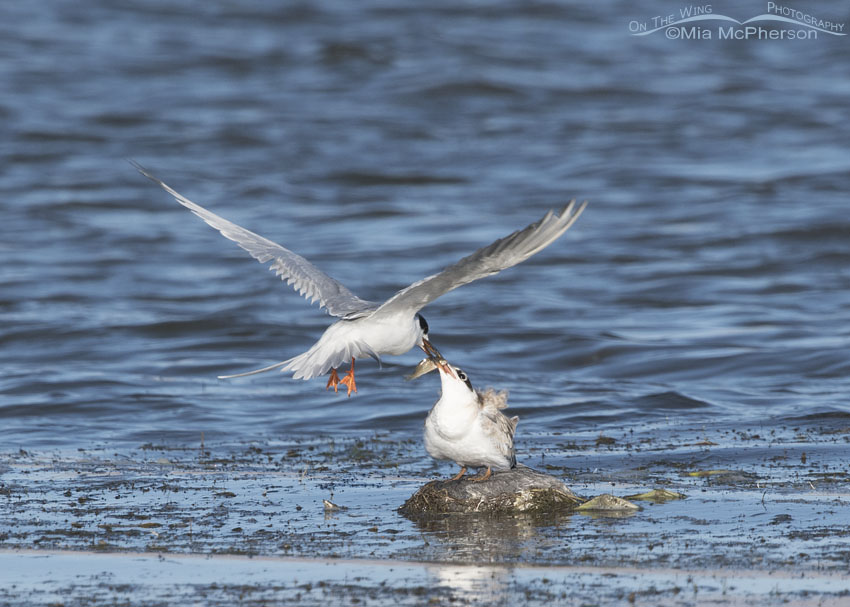 Autumn Yellow-rumped Warbler – Nikon D500, f7.1, 1/250, ISO 500, Nikkor 500mm VR with 1.4x TC, natural light
Autumn Yellow-rumped Warbler – Nikon D500, f7.1, 1/250, ISO 500, Nikkor 500mm VR with 1.4x TC, natural light
I spent time looking for, observing and photographing birds yesterday morning at Bear River Migratory Bird Refuge. It felt great to get away from the news following the events that occurred at Las Vegas and to allow nature to soothe me. Even if I hadn’t photographed a single bird I really needed to be there at the refuge seeking refuge.
There were birds that I photographed including this Yellow-rumped Warbler who perched out in the open with the fall colors of curly docks in the background. The morning light still had a golden quality to it when I photographed the Yellow-rumped Warbler and it seemed to make the curly dock in the background and the bird glow.
 Yellow-rumped Warbler perched on burs in front of curly dock – Nikon D500, f7.1, 1/500, ISO 500, Nikkor 500mm VR with 1.4x TC, natural light
Yellow-rumped Warbler perched on burs in front of curly dock – Nikon D500, f7.1, 1/500, ISO 500, Nikkor 500mm VR with 1.4x TC, natural light
The Yellow-rumped Warbler moved to a new perch just slightly south of the original location which was more out in the open and less cluttered looking. I liked the texture of the burs on the plant it perched on and at the time I thought it was a burdock plant but after looking at the burs more carefully at home I am now not so sure of that ID.
I am sure that that some of the plants in the background are curly dock but I don’t know if they are a native curly dock or an introduced species of curly dock. I do know that I love the color it added to my images though! Curly dock can even be eaten when the leaves are very young, I am just not brave enough to do that myself.
To view more of my Yellow-rumped Warbler photos click here.
 Fall colors at Bear River MBR – Nikon D810, f11, 1/500, ISO 320, Nikkor 18-200mm VR at 18mm, natural light
Fall colors at Bear River MBR – Nikon D810, f11, 1/500, ISO 320, Nikkor 18-200mm VR at 18mm, natural light
This photo of fall colors at the refuge was taken a little later in the morning at the same location where I photographed the Yellow-rumped Warbler, the darkest brown & mahogany colors in the frame are curly docks. I wanted to include this landscape image to show the beauty of the fall colors at the refuge and the distant Promontory Mountains. It may be hard to see at this size but there are oaks on those mountains that have already turned red.
 Forster’s Tern feeding its young who is perched on a dead coot – Nikon D500, f7.1, 1/2000, ISO 500, Nikkor 500mm VR with 1.4x TC, natural light
Forster’s Tern feeding its young who is perched on a dead coot – Nikon D500, f7.1, 1/2000, ISO 500, Nikkor 500mm VR with 1.4x TC, natural light
Next up is a photo from a series that only happened because of my spotting abilities, innate curiosity, and my keen eyesight.
I noticed a medium sized, white colored bird perched on a mound in the water from the auto tour route at the refuge and I wanted to stop to see what it was even though it was far enough away that I knew I couldn’t get frame filling images of the bird.
When I got my lens on the bird I could see that it was a juvenile Forster’s Tern and weirder yet was my discovery that I had found a young tern who was perched on the carcass of a dead bird. Shortly after I began to photograph the juvenile tern started calling frantically and an adult flew it to feed its young while it hovered over it and the body of the dead bird which turned out to be a deceased American Coot. I have a long and very unique series of photos that show the adult bird flying in, feeding and then flying away plus the juvenile consuming the tiny fish.
I’ve photographed thousands and thousands of birds and this is the first time I have photographed a tern using a dead bird as a perch. I do seem to spot some odd things when I am out photographing birds.
Life is good. Live it fully.
Mia


Thank you all so much for your comments.
And thanks go out to Walt for the plant identification, I was leaning towards Cocklebur and was going to add my thoughts about that yesterday afternoon but then I found out my oldest son had possible appendicitis and all those thoughts flew out of my mind. It was his appendix, he had surgery this morning and has since been sent home to recover.
Oh, my! Family emergencies take precedence!
Cocklebur, Xanthium strumarium. It’s native but thrives in disturbance, particularly in wet areas. It gets quite reddish in fall. It’s a composite, unlike dock, which is the Polygonaceae. Burdock, which is introduced, is also in Asteraceae.
I look forward to your fine photos; thanks!
Another set of beautiful images. Love the warbler. Thanks Mia.
Beautiful warm brown colors!
I envy you your eyes. And am very grateful for the magic you share.
Warm fall morning light is the best, and you really made the best of it.
Vfour beautiful shots…especially like the first with its warm colors and graceful spiral of curly dock in the background…
Amazing photography as always, Mia. I love these kinds of nature discoveries. The fall colors are amazing. You make me miss Utah. I would love to drive that refuge road again!